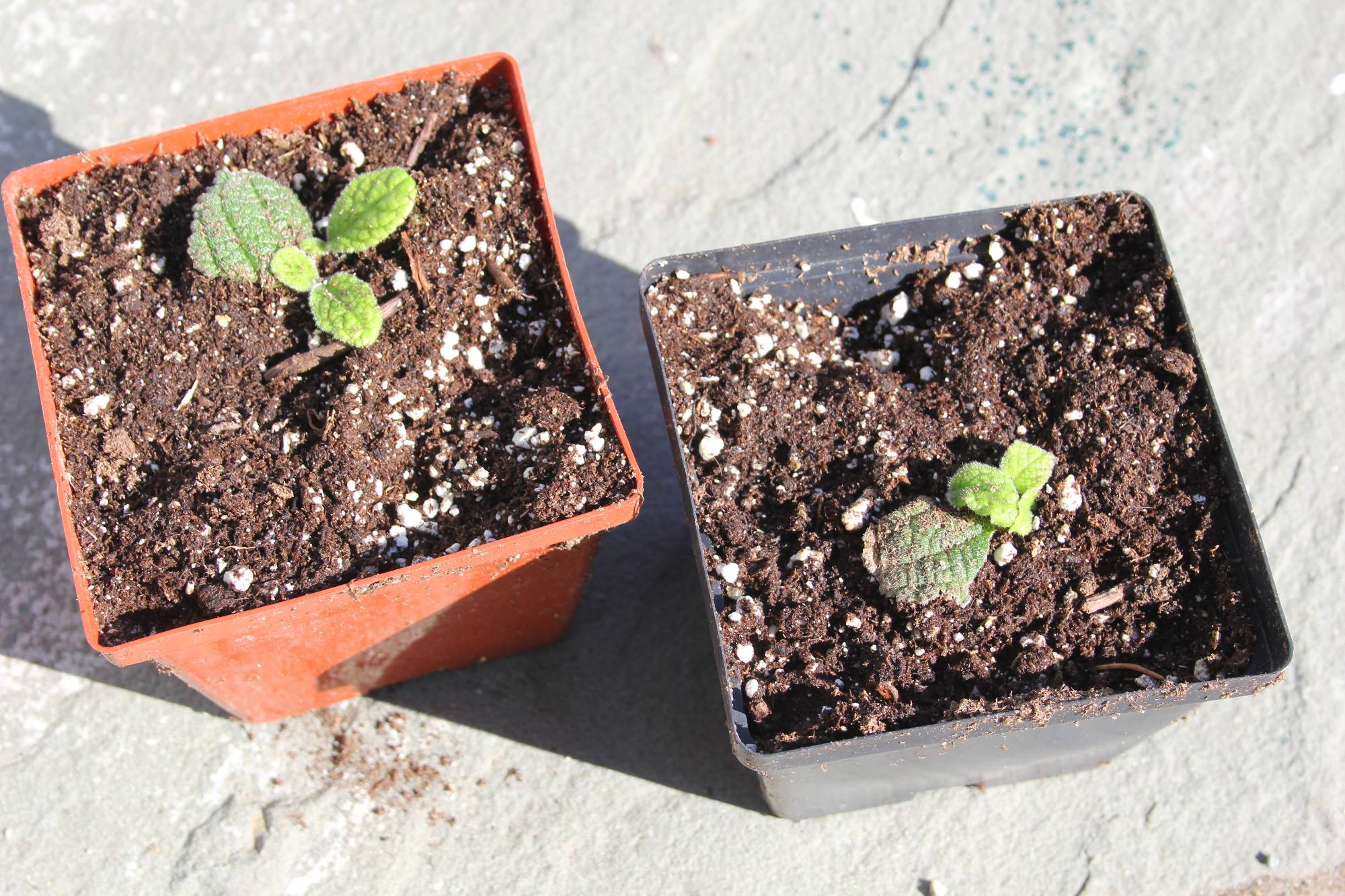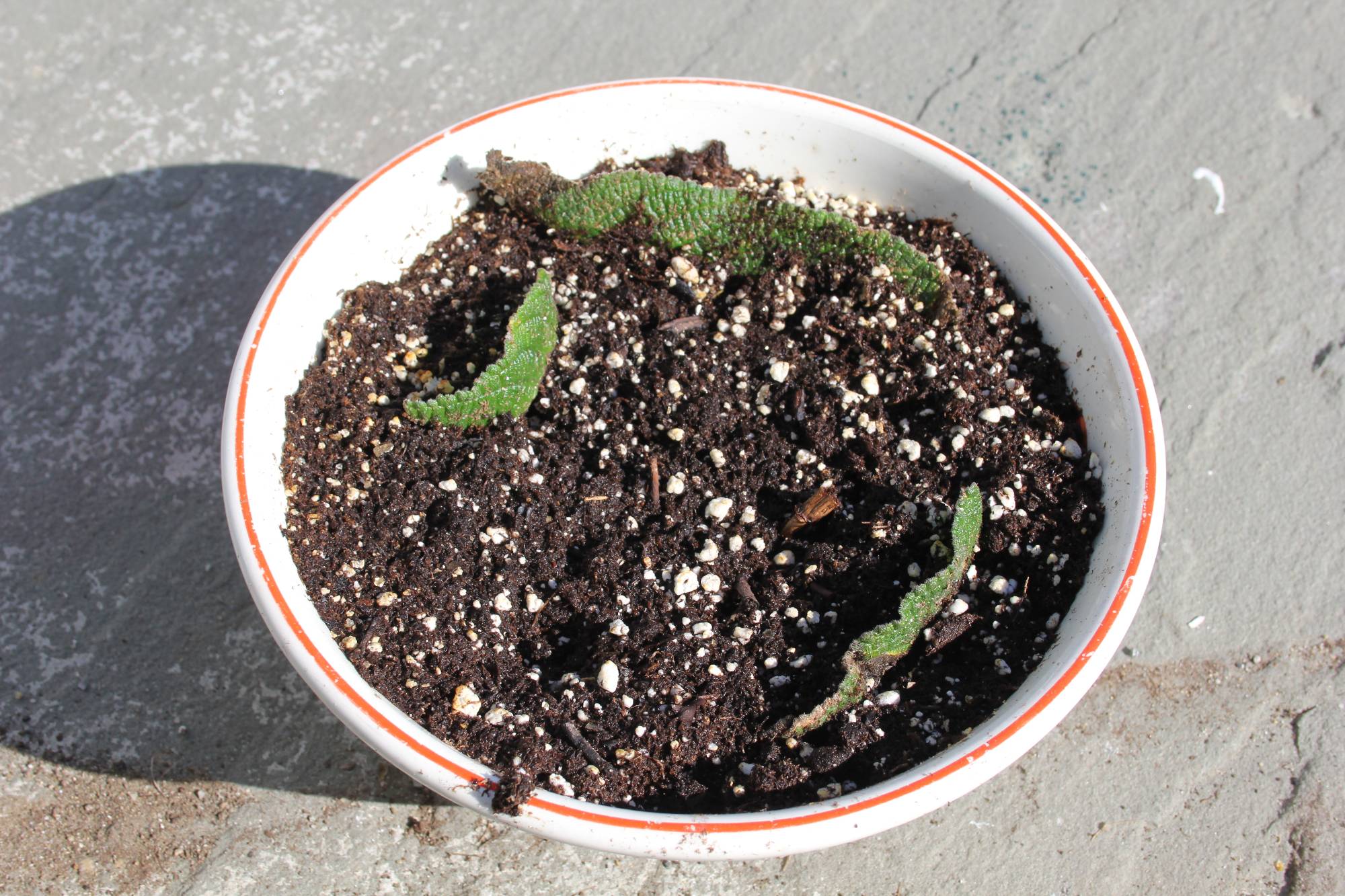 At any given time, my greenhouse holds about 30 Streptocarpus plants, commonly called Cape primrose. I give many to friends who, like me, love to see them bloom, so I have to keep constantly propagating these plants. This is done in an unusual way, using a leaf from a mother plant.
At any given time, my greenhouse holds about 30 Streptocarpus plants, commonly called Cape primrose. I give many to friends who, like me, love to see them bloom, so I have to keep constantly propagating these plants. This is done in an unusual way, using a leaf from a mother plant.
 First, select a leaf on the mother plant that is straight, green, and healthy. Using an X-Acto or other sharp knife, cut off the leaf close to the mother plant’s base. Then slice out the leaf’s midrib, which runs down the center of its length, leaving you with two long pieces of green leaf. Next, put hormone powder on the freshly cut edge of each piece and bury the edge about a quarter inch deep in a half-and-half mixture of potting soil and sand. You can cover the pot with plastic wrap to keep the cut leaves moist; otherwise, they should be misted daily or even twice a day. I put my pots under fluorescent lights in a germination chamber where the temperature stays around 70˚, but the pots can be placed in any warm location with bright light that isn’t too intense. Morning sun is ideal.
First, select a leaf on the mother plant that is straight, green, and healthy. Using an X-Acto or other sharp knife, cut off the leaf close to the mother plant’s base. Then slice out the leaf’s midrib, which runs down the center of its length, leaving you with two long pieces of green leaf. Next, put hormone powder on the freshly cut edge of each piece and bury the edge about a quarter inch deep in a half-and-half mixture of potting soil and sand. You can cover the pot with plastic wrap to keep the cut leaves moist; otherwise, they should be misted daily or even twice a day. I put my pots under fluorescent lights in a germination chamber where the temperature stays around 70˚, but the pots can be placed in any warm location with bright light that isn’t too intense. Morning sun is ideal.
 After five or six weeks, you should see tiny new leaves forming along the buried, cut edge of the mother leaf. There might be any number of these, from one to as many as six. When the new leaves grow to about half an inch long, carefully lift the mother leaf from the soil and cut off the tiny new plantlets with our Xacto knife or scissors. Plant each in slightly sandy potting s
After five or six weeks, you should see tiny new leaves forming along the buried, cut edge of the mother leaf. There might be any number of these, from one to as many as six. When the new leaves grow to about half an inch long, carefully lift the mother leaf from the soil and cut off the tiny new plantlets with our Xacto knife or scissors. Plant each in slightly sandy potting s
oil and water it in. Generally, it will take three months or so before the new plants are big enough to come into flower with blooms just like the mother plant.
 Proper feeding and sun exposure are important. Use a half-strength balanced fertilizer such as 20-20-20 every month until the new leaves are about four inches long, after which feeding can be full-strength. Although Streptocarpus plants like a bright environment, they don’t do well in blazing, noontime sun. So set them in an area of your greenhouse where they’ll get bright morning sunlight and sh
Proper feeding and sun exposure are important. Use a half-strength balanced fertilizer such as 20-20-20 every month until the new leaves are about four inches long, after which feeding can be full-strength. Although Streptocarpus plants like a bright environment, they don’t do well in blazing, noontime sun. So set them in an area of your greenhouse where they’ll get bright morning sunlight and sh
ade the rest of the day. In summer, Streptocarpus plants can be moved outdoors to this same kind of environment. Mine do well along a stone wall that receives bright morning sunshine but is protected by tree shade from the more intense light of afternoon.


